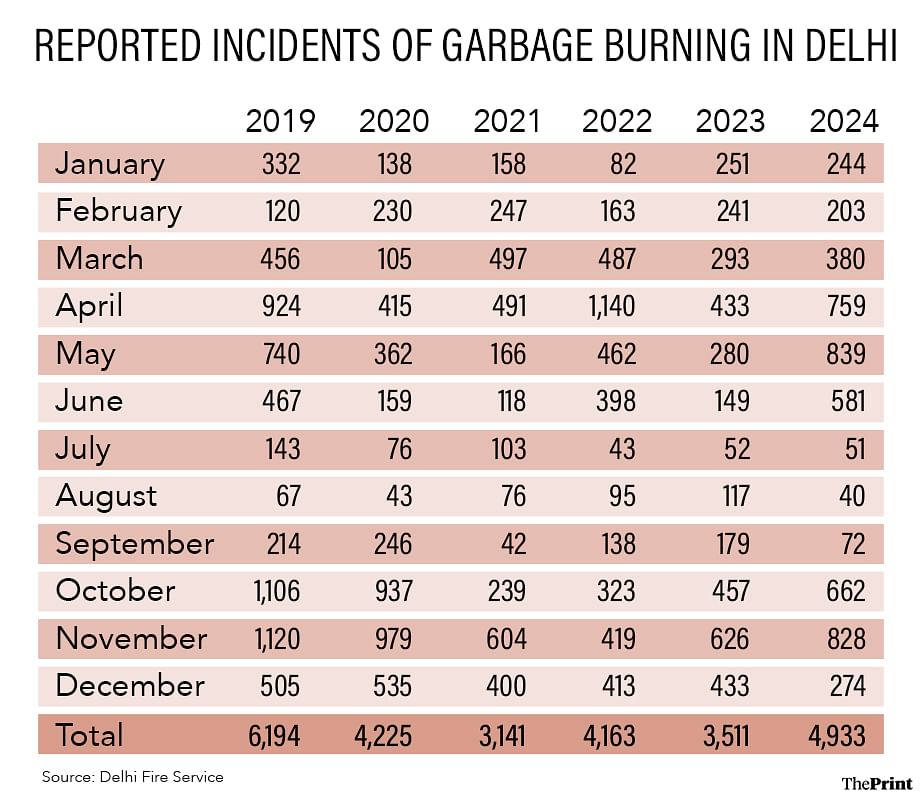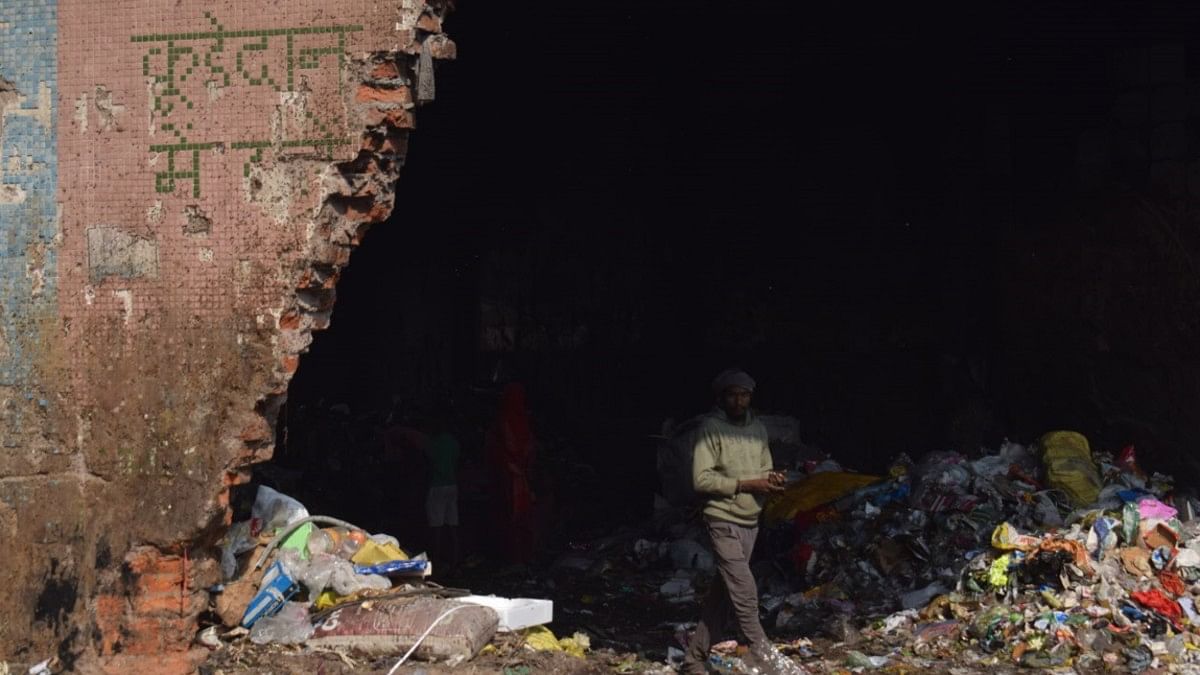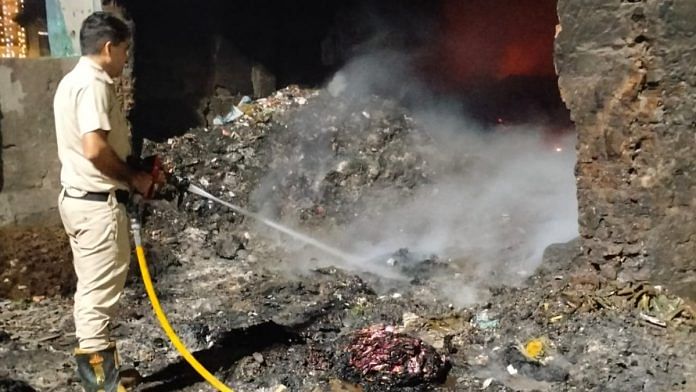New Delhi: Parts of Delhi are breathing hazardous air, yet again. Even as focus has remained on farmers burning stubble (parali) in neighboring states, smaller fires continue unchecked throughout the national capital.
Data accessed by ThePrint shows Delhi Fire Service recorded 4,933 incidents of garbage burning this year until 12 December.
This marked the highest number of incidents recorded since 2020, and a steep increase from 3,511 incidents in 2023.
Of the nearly 5,000 incidents recorded this year, May and November saw the highest at 839 and 828 respectively.

Night after night, heaps of illegally dumped waste is set ablaze by ragpickers, filling the air with toxic smoke.
In Northeast Delhi’s Dayalpur, residents allege waste operators charge scavengers for access and accept waste from distant areas, including neighboring municipalities. Once items of any value are extracted, what remains is set ablaze under the cover of darkness.
“Every week, we’re forced to call the fire brigade to rescue us from the toxic smoke,” said Dayalpur resident Puneet Panchal. “We already live in one of the world’s most polluted cities, and this makes our situation unbearable.” Singh claimed “no action” is taken despite repeated complaints to local authorities.
Atul Garg, director of Delhi Fire Services, told ThePrint, “Our job is to reach the spot as quickly as possible and control the fire. Our men are working 24/7 for this task. We cannot say why these fires start; our role begins once we receive the call to extinguish the fire.”
Illegal solid waste burning contributes to air pollution, releasing harmful particulate matter (PM2.5 and PM10), carbon monoxide, and non-methane volatile organic compounds (NMVOCs).
According to pollution source apportionment studies carried out in Delhi in the past, waste burning contributes anywhere between 2-3 percent to Delhi’s pollution load. It is among the five top pollution sources in Delhi-NCR during winter, when the air quality in the region reaches emergency levels.
While its contribution to Delhi’s overall pollution may seem less, Central Pollution Control Board (CPCB) data shows waste burning and open fires is one of the primary sources of local pollution. Unchecked burning of waste material like plastic emit thick smoke that is enough to spike local pollution levels of an area and cause severe health problems.
These toxic emissions exacerbate respiratory problems, cardiovascular issues, and cognitive impairment, with children and the elderly being especially vulnerable.
For Ajay, who moved to Dayalpur in 2022, the health impact has been devastating. “When I moved here my family was healthy. Now, my mother and wife have severe health problems, and my kids suffer from chronic allergies almost every other month. No one listens to our complaints.”

His story is echoed by many neighbours. Some residents, unable to endure the worsening conditions, have considered relocating. But, a major obstacle stands in their way.
“Why would anyone buy a house in a place like this? Our hard-earned money feels wasted,” lamented Panchal.
Residents ThePrint spoke to claimed they started filing complaints two years ago to the local MLA, municipal council, district commissioner and even the L-G.
They also filed complaints through MCD 311 app, but claimed these are routinely marked as resolved without any real action on the ground. Frustrated by this alleged lack of official intervention, residents have started confronting dump yard workers and scavengers themselves. “If we don’t step in, our streets will be buried in garbage,” said a resident who did not wish to be named. “We’re fighting to maintain even a basic level of livability.”
Sharanveer Singh is an intern with ThePrint
Also Read: Delhi air pollution: The A to Z of Delhi’s AQI






